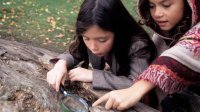6 Ways to Unplug From Classroom Technology in Our Digital Age
There are a lot of great ways to use tech in the classroom, but challenging students to sometimes work without it has benefits for creativity, critical thinking, and engagement.
Your content has been saved!
Go to My Saved Content.I recently spoke with several tech coaches who had done audits of digital tools in their buildings—they found more than 400 tools being used in their schools! I know a lot about technology, yet I still find myself struggling to strike the right balance of technology in the classroom. Avoiding overreliance on technology in our highly digital world can be challenging. One solution is to “unplug.”
Integrating into your classroom unplugged activities that do not require technology can offer many benefits, including helping students develop a variety of skill sets. Although each of these ideas can also be implemented with technology, there are ways to use these without the tech and that help amplify the learning experience for students. Having an unplugged classroom does not always require a lot of planning or materials. In my classroom, when I notice a decrease in student engagement, I shift to trying new methods and mixing up the activities to promote student choice and more active learning.
6 Ways to Unplug
1. Genius hour. Students select a topic of interest and have time to develop a presentation. They may refer to resources such as books, videos, or internet research, but their presentation must be done without the use of technology. Students can create a visual display, such as a poster, a replica, or a demo of their topic, and then deliver a presentation to their classmates.
2. Place-based learning. Opportunities to explore the community while connecting content to the real world make learning experiences more valuable and meaningful for students. One year, my students did an outdoor project about childhood, and they visited a local park and playground for research.
Students in a history class could visit local historical sites to better understand the content they are learning. Science classes such as biology or ecology can have students explore local areas, learn about the ecosystem, and participate in projects to clean up the community or learn about and present solutions to environmental concerns. Place-based learning boosts student engagement, fosters student agency, and helps students develop a greater understanding of their impact on the community and even the world.
3. Project-based learning (PBL). Through PBL, students have many opportunities to build essential skills that are in demand for future work. It boosts engagement and makes learning more relevant, which also helps with motivation. Whether PBL is done through a grade-level focus, cross-curricular collaboration, or individually, students and teachers benefit from it.
For example, my Spanish class focused on the United Nations Sustainable Development Goals one year. Students created different products by hand to represent their learning. One of my students made a watercolor project to display land regions and plants, another student used clay to create different structures related to her topic of housing, and several students designed visuals to represent their learning. Beyond the research, helping students find ways to share learning that builds confidence and promotes creativity and problem-solving will benefit them as they consider skills needed in the future.
4. Sketchnoting. A few years ago, I decided to dive into sketchnoting as a way to engage students in a more creative way. Sketchnoting is visual note-taking, the process of using drawings to represent words or concepts. It has been referred to as doodling with a specific purpose: to represent complex topics. For students who enjoy doodling, sketchnoting has been a great option. One year, we created PSAs to inform classmates and the school community about digital citizenship. For teachers who may use tools to have students create word clouds, sketchnoting is a great option to move away from the tech.
5. Skits. Skits and role-playing boost creativity, collaboration, and student engagement in lessons. Some students may hesitate to be involved, but providing some structure and ongoing support and check-ins can help students become more confident and comfortable when working with classmates. There are many tools available for creating videos; however, performing live in class can be fun. For students who prefer not to perform in front of classmates, this could be a time when technology is used to record the skit to then be played in class. Some students have more confidence when they have prepared, recorded, and then shared their skit.
6. Station rotations. Several years ago, I was dealing with a decrease in student engagement in my own classroom, and I wanted to provide more opportunities for students to collaborate, engage in more hands-on learning, and be more active. I decided to try stations. Some unplugged activities can include having students create flash cards, asking students to make up a game, or giving students the option to select from a variety of materials (markers, paper, sticky notes) and then come up with their own way to practice with the content at their station.
There are a variety of benefits of unplugging in the classroom. Digital tools are quite useful, but we need to find some balance and avoid overreliance on technology in the classroom. Without clearly defined objectives or lessons delivered in an interactive or game-based learning platform, students have to work together. Reducing the use of technology promotes more active learning and interactions that help build relationships. Students can build essential skills such as collaboration, creativity, critical thinking, and problem-solving by learning in different ways.
